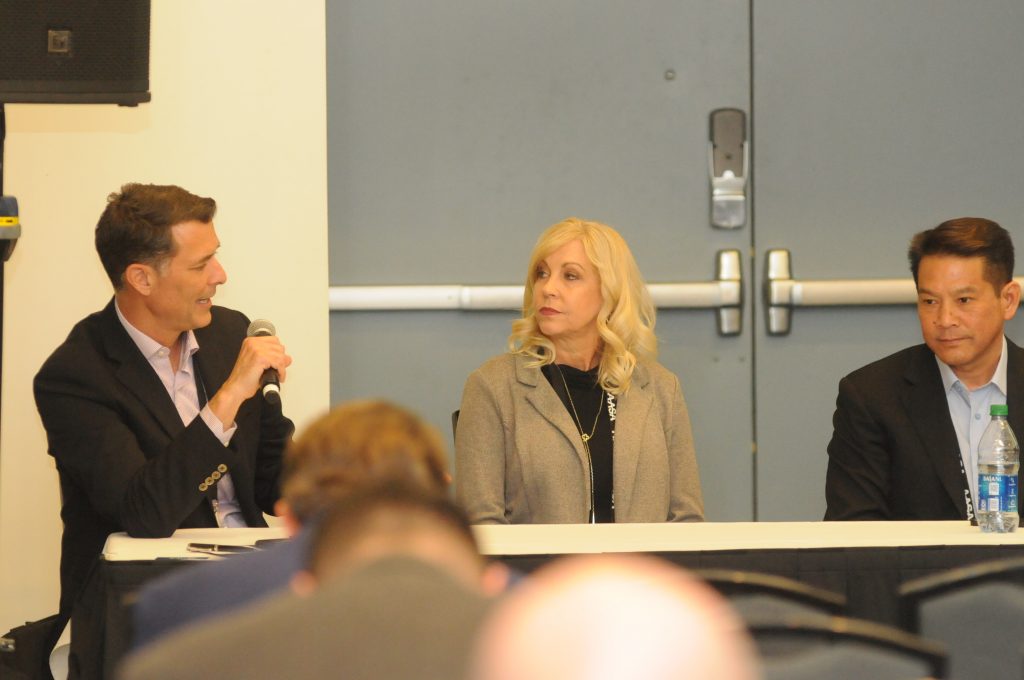As schools across the world recover from the past two pandemic years, administrators in Cajon Valley Schools in California are heeding the lessons of the pandemic.
One lesson: Listen to stakeholders. After Cajon Valley shut down operations on March 13, 2020, it took Miyashiro’s team 14 days to realize they needed to find a way to reopen the schools.
“Listening to stakeholders, we knew we had to open schools,” said Michelle Hayes, assistant superintendent of personnel services during a team presentation on “Leading School Systems During the Past Two Years: Lessons Learned” at AASA’s national conference in Nashville on Friday.
Zoom meetings with parents and staff lasted long after hours, went through the weekend, and haven’t really stopped since, according to Hayes.
A commitment to hearing stakeholders vent their feelings gave invaluable insights that guided the district into establishing their schools as childcare centers for essential workers.
The leadership team immediately began coming into work and gave teachers permission to return to their classrooms by distributing “essential worker stickers.”
“There’s something to be said about the psychological preparation for returning to work,” said superintendent David Miyashiro.
Staff members were quickly invested in the work of serving school lunches, providing supervision for children of essential workers, and planning Camp Cajon, a play-based enrichment program that ran during the summer.
Keep in mind that these things occurred in the first months of the pandemic, setting Cajon Valley Schools up for success when schools reopened in August.
David Hidalgo, chief of innovation and engagement for the district, said some pre-pandemic work positioned the district to be able to implement effective strategies much more quickly than other districts. For instance, staff members were well-versed in Zoom meetings and students had experience working in the district’s learning management system.
Hidalgo noted that each school is given a budget for culture development. “Corporations do that, why shouldn't schools,” he asked. School-level leadership can use the budget for snacks, faculty field trips, or morale boosting events. The administrative team picked up this strategy after a visit to the Google campus.
On the topic of staff morale, Miyashiro said he quickly gave school administrators permission to take things off their plates — teacher evaluations and any other tasks that they deemed nonessential.
The panelists described the districts’ open-door policy for leadership meetings and an emphasis on having fun together.
“This high-functioning district leadership team does not operate in silos,” said panel moderator Ann McMullan, the project director for AASA’s EmpowerED Superintendent Initiative.
McMullan discovers high performing superintendents and gives them a platform to tell their stories. Join the Super-Connected Community on edWeb for networking, discussions, and invitations to upcoming edWebinars.
(Kate Crowder is a reporter for Conference Daily Online and communications director in Germantown Municipal School District, Germantown, Tenn.)

